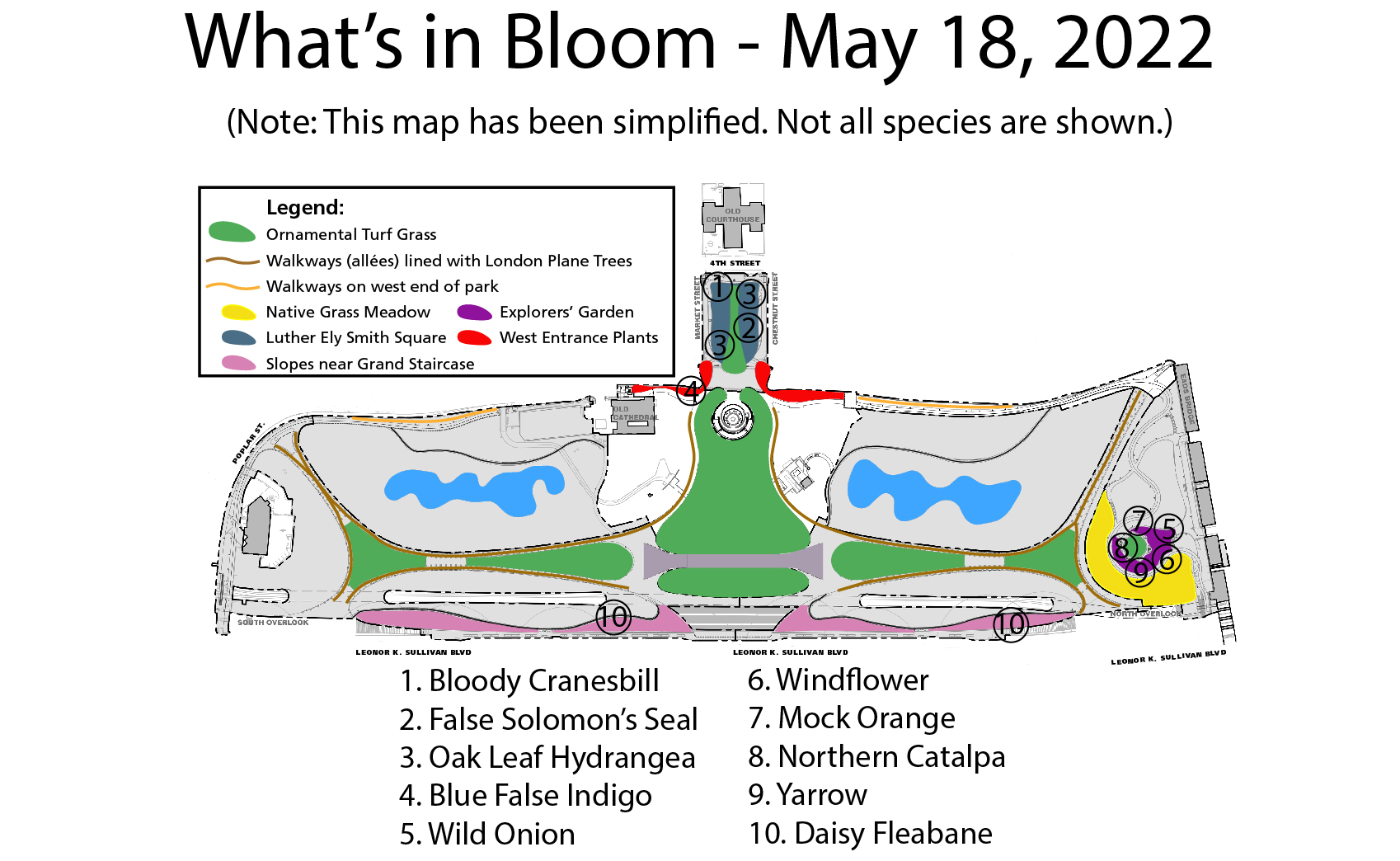
By happy coincidence, 9 of the 10 featured blooms today have white blossoms!
-
Bloody cranesbill, Geranium sanguineum. Blooming in Smith Square.
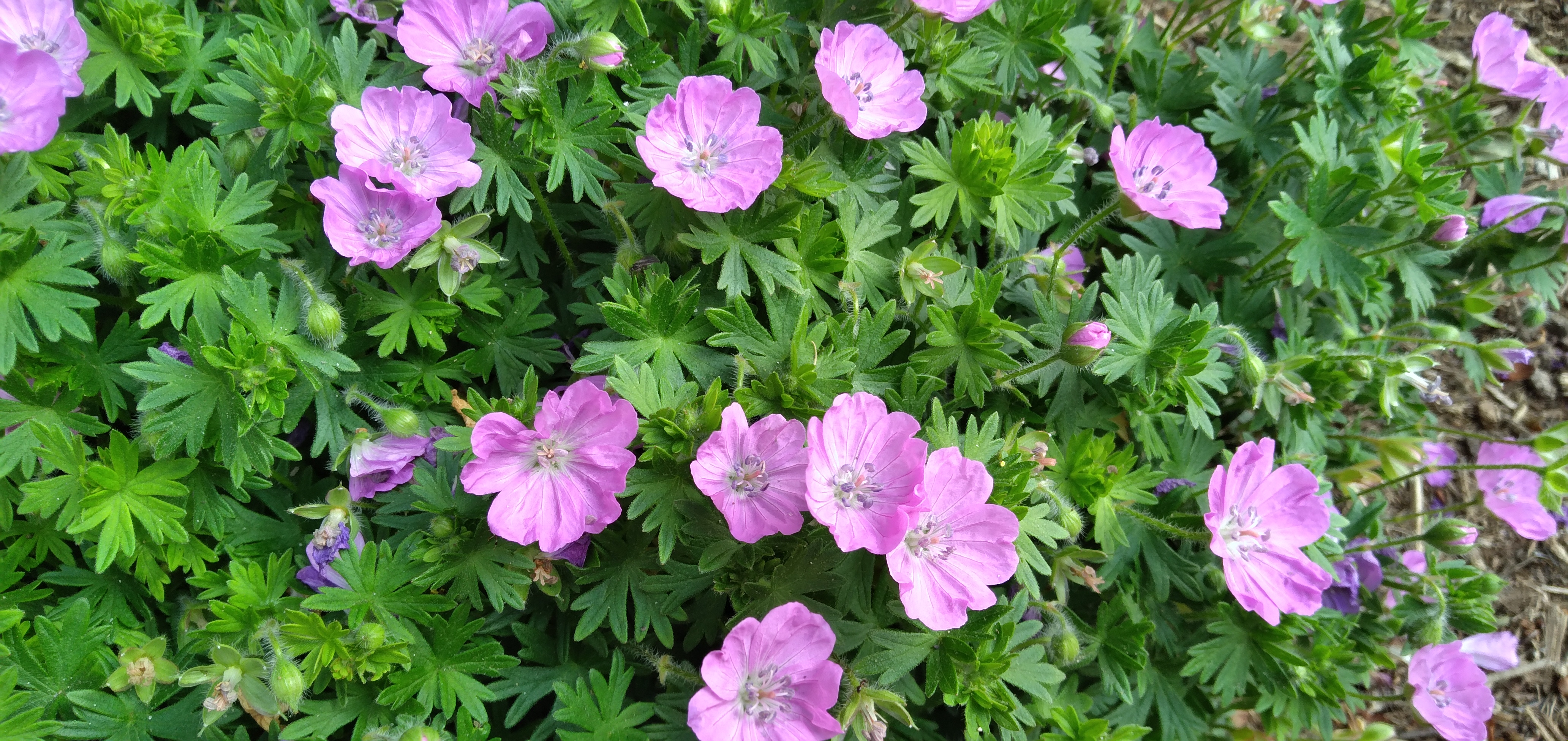
- Photo: A. Prosser, NPS
This plant is often referred to as “bloody cranesbill” or “bloody geranium”. These names, as well as its Latin name sanguineum, refer to the reddish, bloodlike color its leaves will take on in the autumn. The “cranesbill” part of its name refers to the sharp, pointed seed pod that will appear on the flower in a few weeks. For now, the species is gracing us with beautiful pink flowers. Though this species is non-native (it is widespread in Europe and temperate Asia) it is a popular garden plant in America and does not have invasive tendencies. Many native pollinators enjoy visiting its blossoms. It’s on the northern edge of Smith Square, near the Old Courthouse.
2. False Solomon’s Seal, Maianthemum racemosum. Blooming in Smith Square.
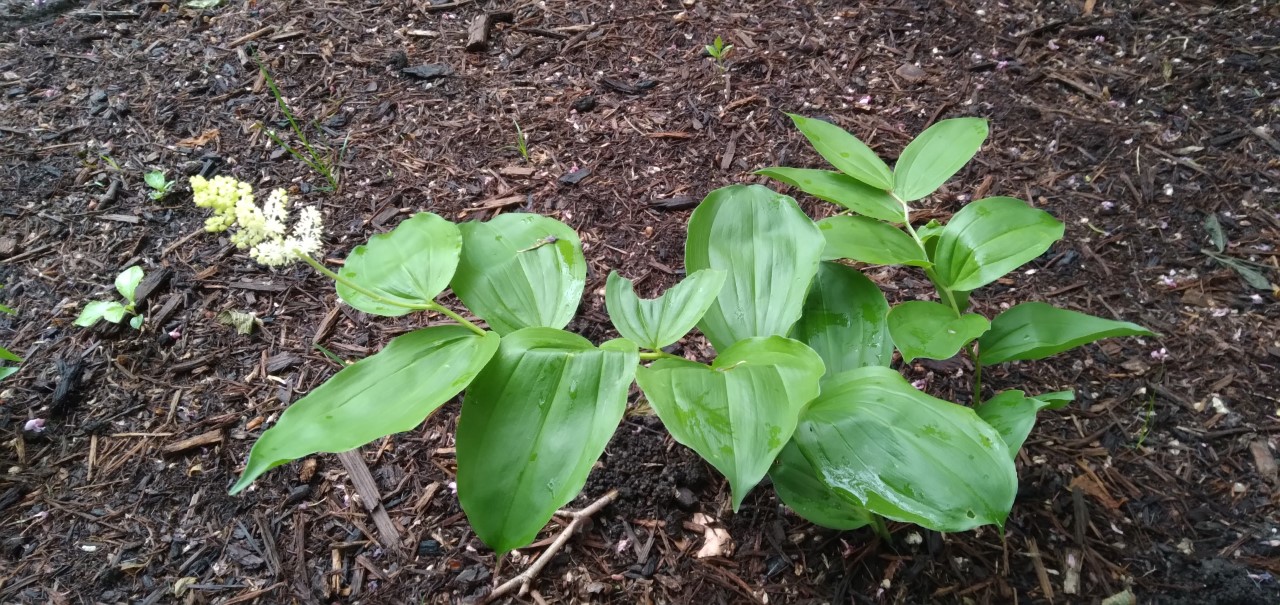
Photo: A. Prosser, NPS
False Solomon’s seal is a native throughout much of North America, and it’s also grown as a garden plant. It spreads slowly through thick rhizomes. It is called false Solomon’s seal because of its similarity to another plant called Solomon’s seal. The main difference between the two species is that Solomon’s seal has berries under its stem, whereas false Solomon’s seal has them at the end of the stem. This means that the berries are much easier to see on False Solomon’s seal. Both species have similar leaf shape and beautiful yellow leaves in the fall.
3. Oak Leaf Hydrangea, Hydrangea quercifolia. Along inner walkways of Smith Square.
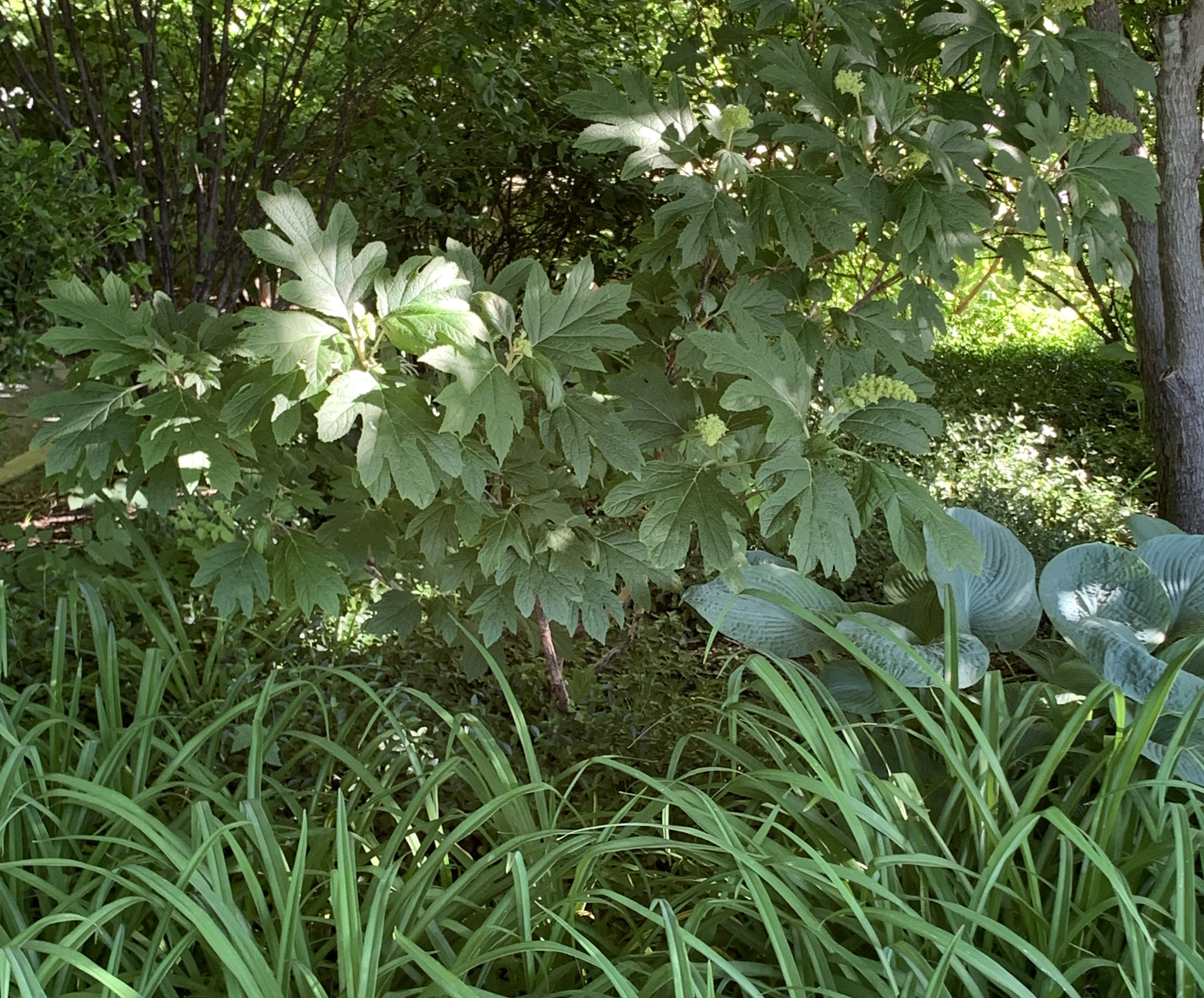
NPS Photo
The flowers of the Oak Leaf Hydrangea are just starting to come in, so by the next posting of this blog they’ll probably be bigger and showier. However, since the species is so widespread in Smith Square and its leaves are so eye-catching, it’s worth a mention now. Hydrangea quercifolia is native to the Southeastern US. Since its showy blooms stick around for several weeks, it is also a popular garden specimen.
4. Blue False Indigo, Baptisia australis. Blooming near benches by the West Main Entrance.
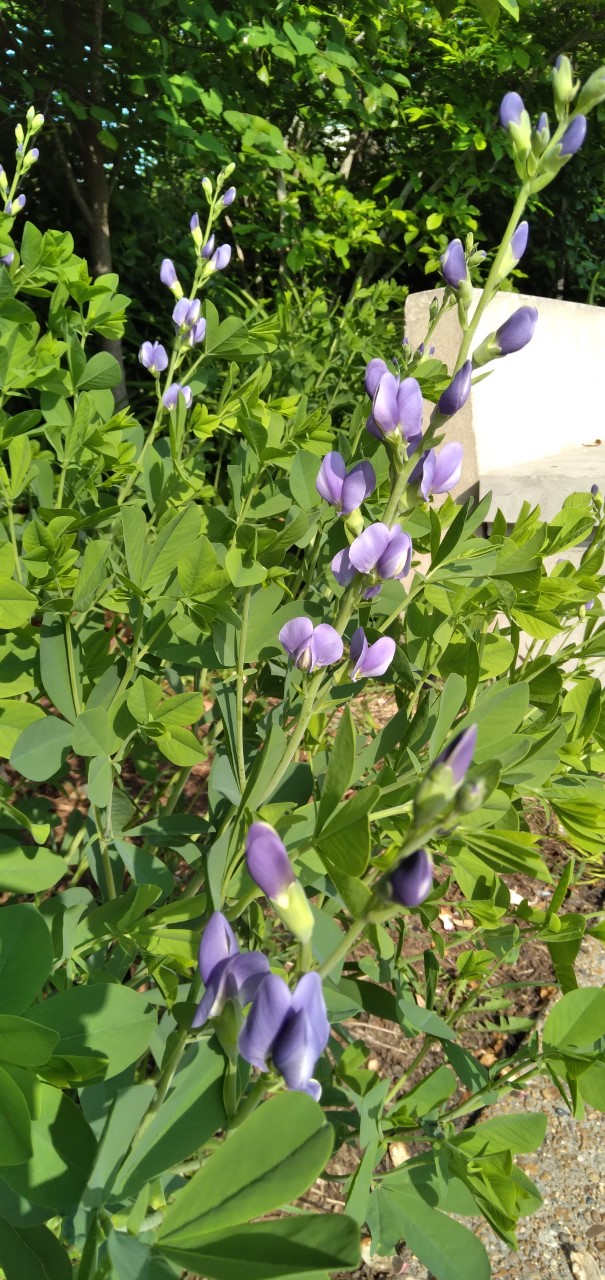
Photo: A. Prosser, NPS
In this ranger’s opinion, the easiest plant to find right now is the tall and elegant Blue false indigo growing by the benches near the front entrance. The spears of gorgeous light-blue/purple flowers are tall and conspicuous. It is a native to the North American prairies and has been used as a dye by craftspeople for thousands of years. Blue false indigo is a member of the pea family and, like most legumes, it can fix nitrogen into the soil and does not require much fertilization. It attracts many insects, especially butterflies.
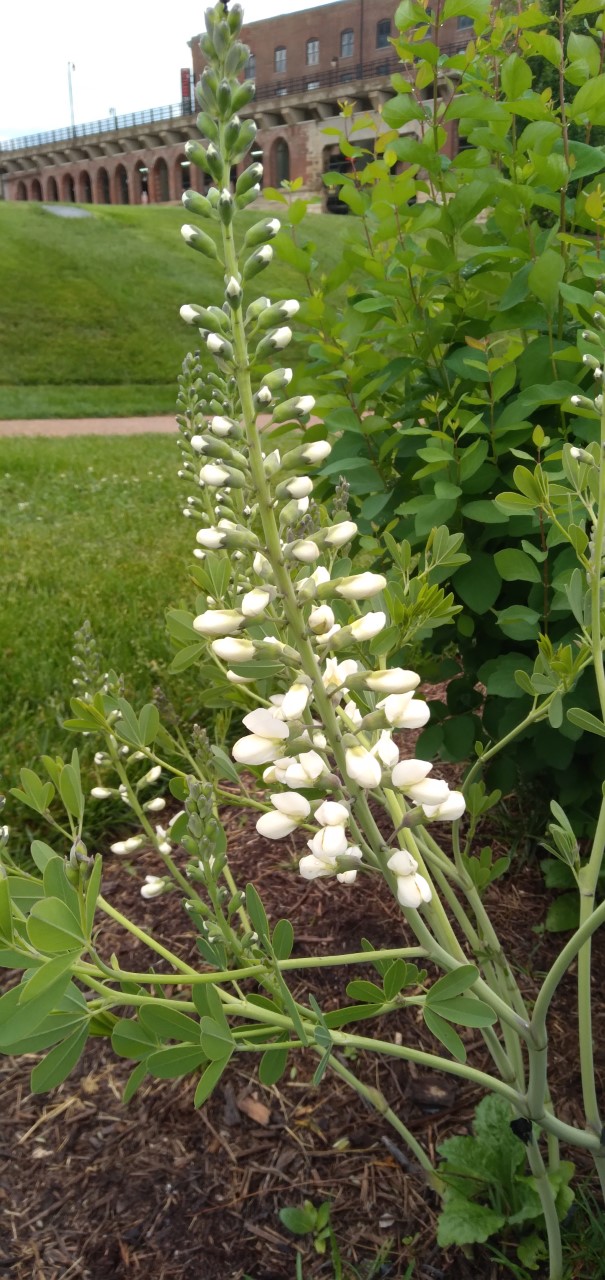
Both Blue False Indigo and a very similar plant called Baptisia alba, or white false indigo (pictured), are also growing in the explorer garden. Photo by A. Prosser, NPS
5. Wild Onion, Allium canadense. Blooming in the Explorers’ Garden.
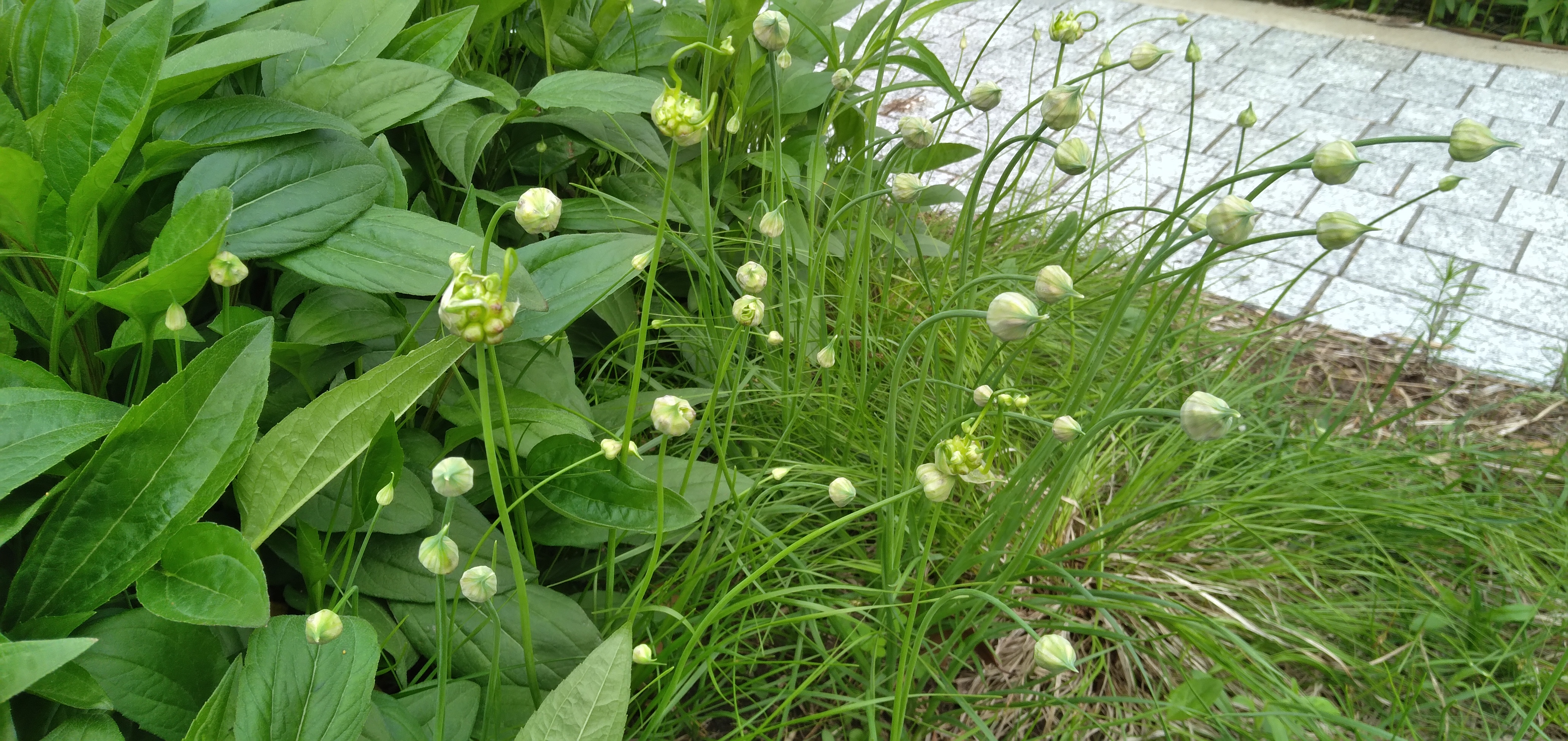 Photo by A. Prosser, NPS
Photo by A. Prosser, NPS
If it smells and tastes like an onion, it’s probably an onion! Our native onion, Allium canadense, has been used to enhance the family meals of indigenous chefs for thousands of years. Later on, early settlers used it as well. It is very widespread and hearty and attracts bees, flies, and other insects throughout its range. It has a strong onion scent.
6. Windflower, Anemone canadense. Currently blooming in the Explorers’ Garden.
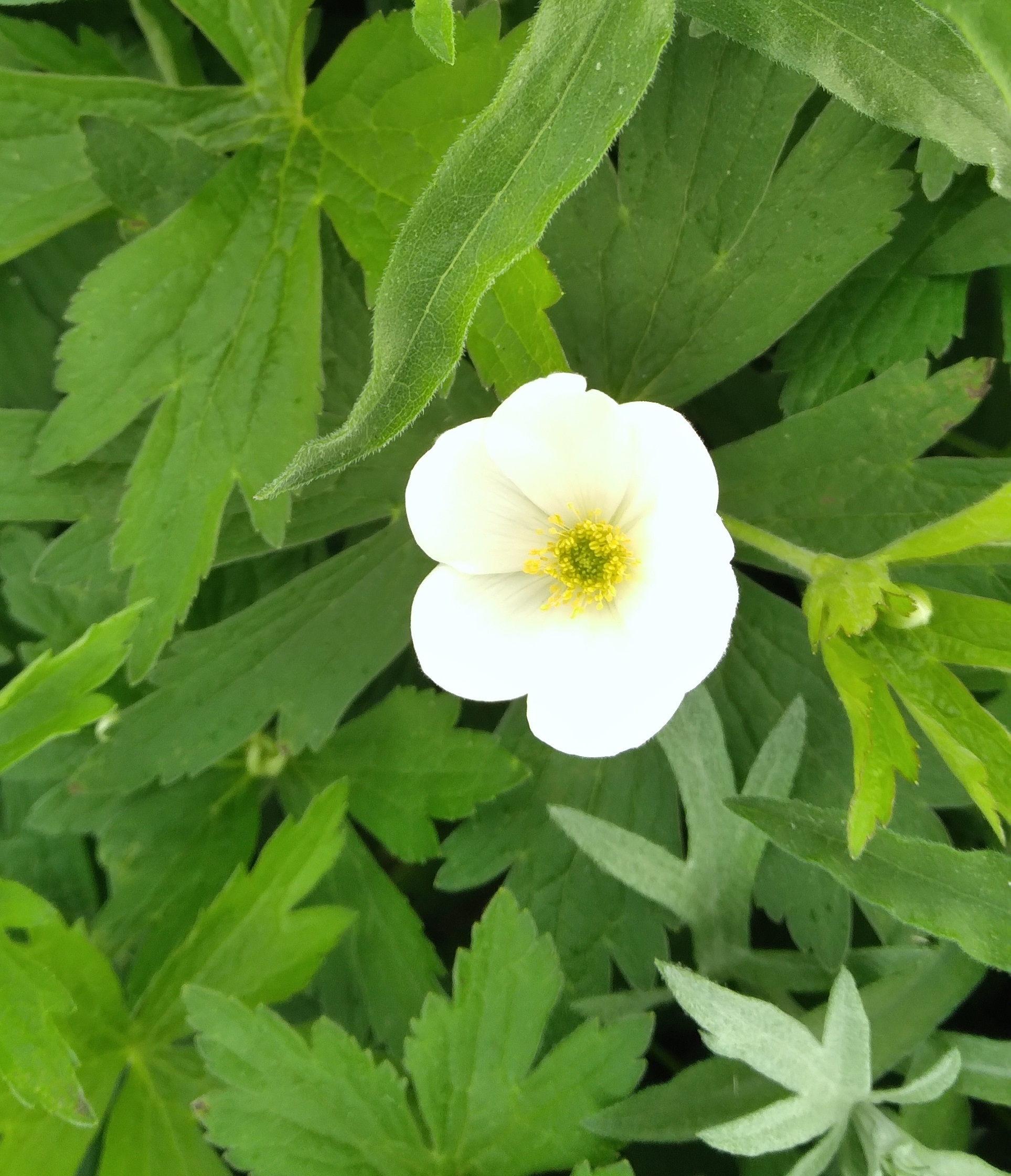
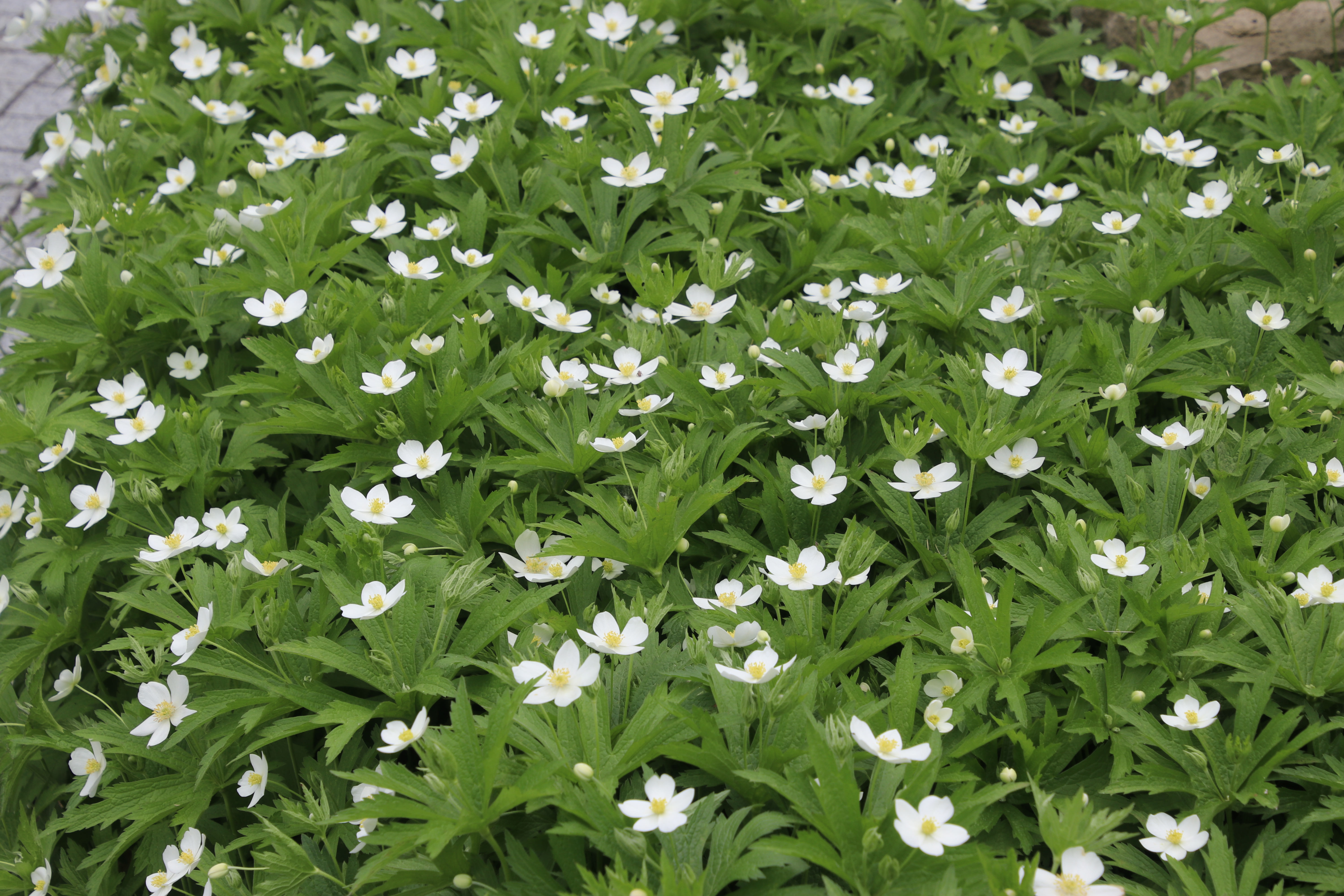
Photos by D. Reissing, NPS
Anemone canadensis, also known as windflower or meadow anemone, is a very adaptable and hardy perennial native to most of the USA (except the far south and the west). It mostly spreads by rhizomes and can aggressively compete with other plants in the area. In the Explorers’ Garden, the anemone is fenced in with edging to make sure it doesn’t invade other garden areas. It will produce flowers for a few weeks – more than most native plants. Though insects enjoy visiting this species, mammals usually avoid it.
7. Mock Orange, Philadelphus lewisii ‘Blizzard’. Blooming in the Explorers’ Garden.
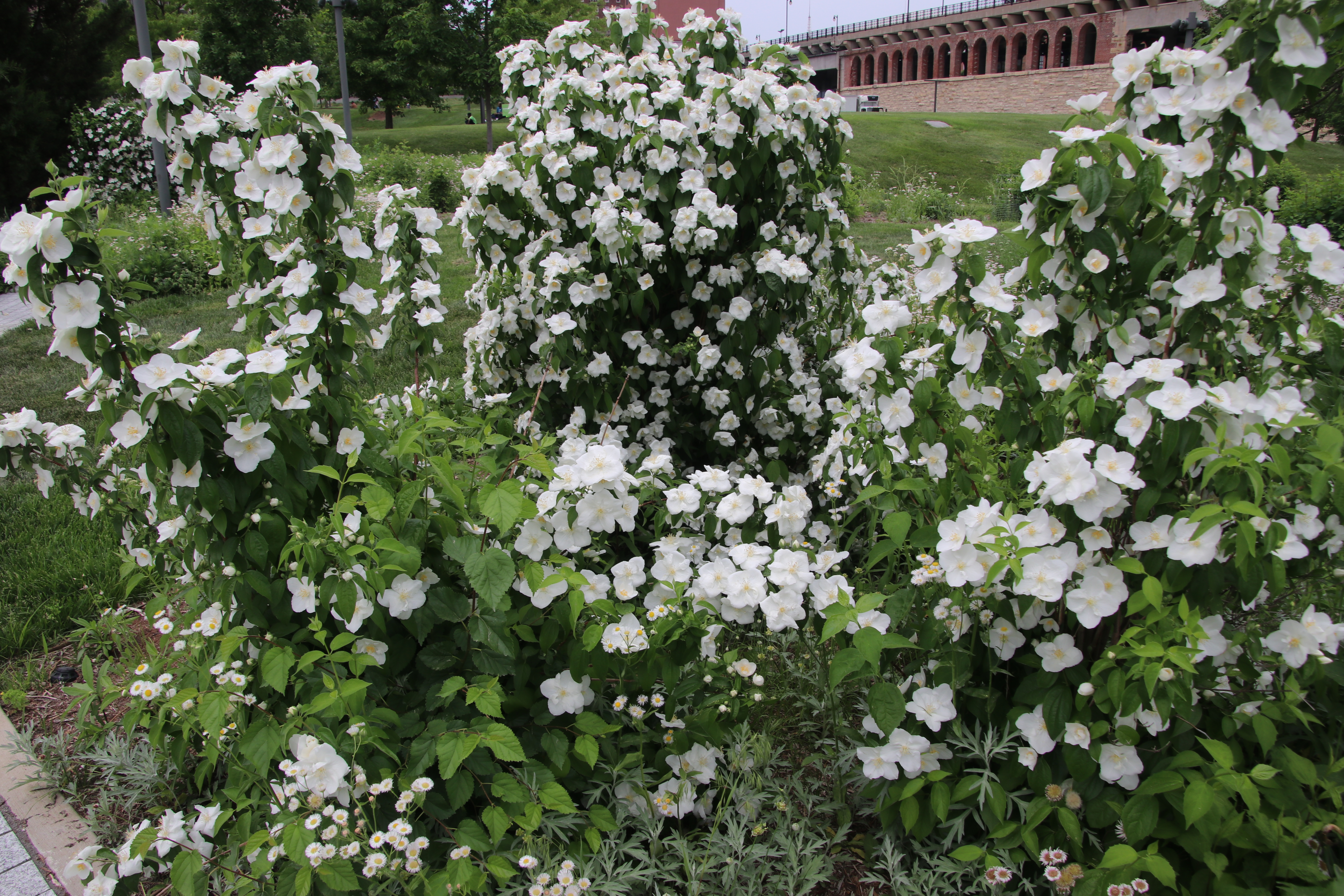
Photo: D. Reissing, NPS
The Explorers’ Garden was named to honor Meriwether Lewis and William Clark, co-captains of the Corps of Discovery journey. This expedition explored the Louisiana territory right after the Louisiana Purchase. The Mock Orange in the Explorers’ Garden is also named for one of these men! Its scientific name is Philadelphus lewisii, as Lewis was the first one to collect its leaves and formally describe it for science in 1806, while he was on his Corps of Discovery journey. It is native to the far west (California, Idaho, Oregon, Washington, and Montana) and is currently the state flower of Idaho. The flowers smell like orange blossoms. Our cultivar, ‘Blizzard’, has exceptional cold tolerance.
8. Northern Catalpa, Catalpa speciosa. Currently blooming in the Explorers' Garden.
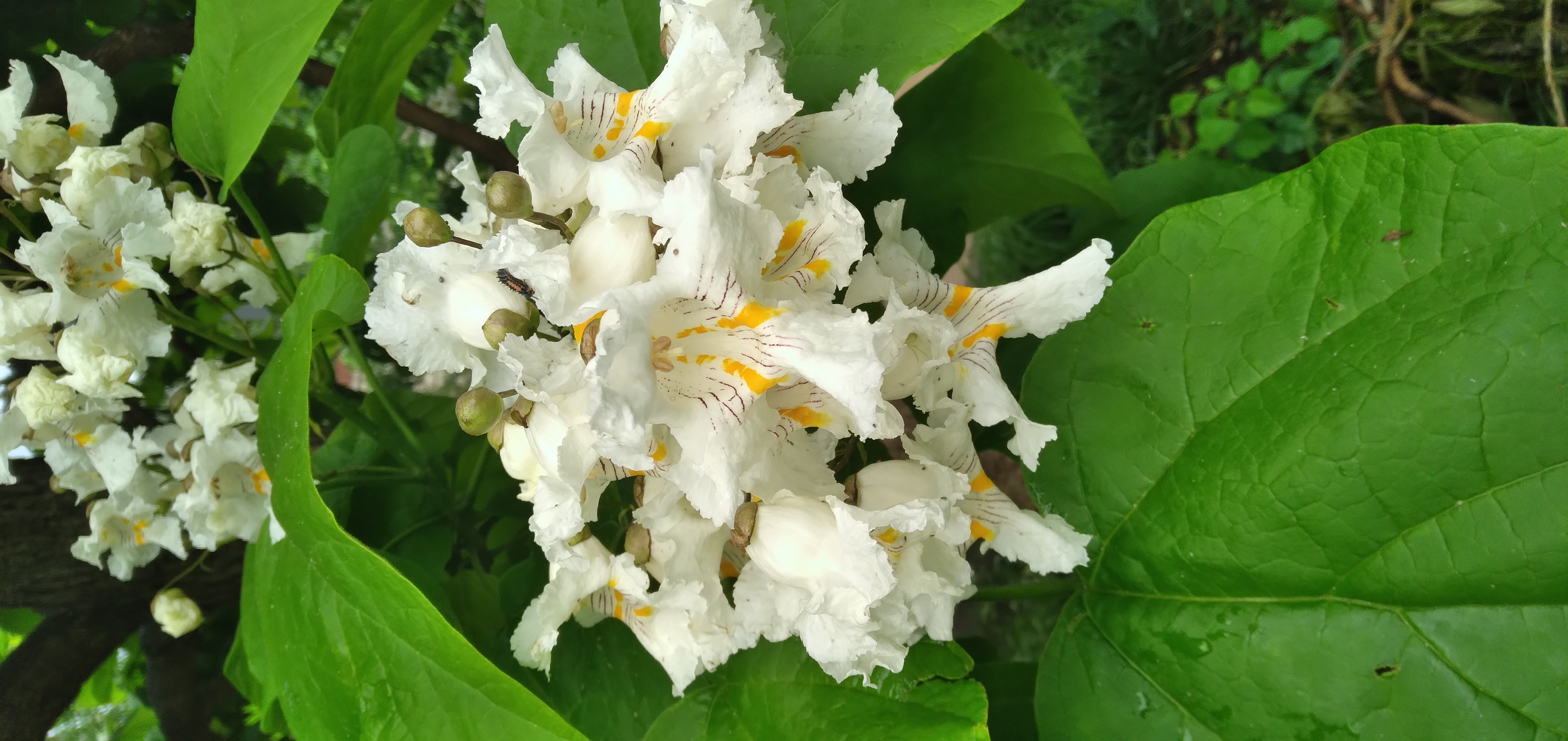
Photo: A. Prosser, NPSThroughout most of the year, visitors ask about this tree because they’re curious about its huge brown seed pods, which hang on the tree from fall into spring. It’s because of these pods that the Catalpas got the nickname “cigar tree” (although the pods are much longer and thinner than any cigar we've ever seen). However, for a brief time in the spring, the flowers of the Catalpas are even more noticeable. This species is native to Alabama, Georgia, Florida, and Mississippi, but it has long been naturalized in many other states.
9. Yarrow, Achillea millefolium. Currently blooming in the Explorers' Garden.
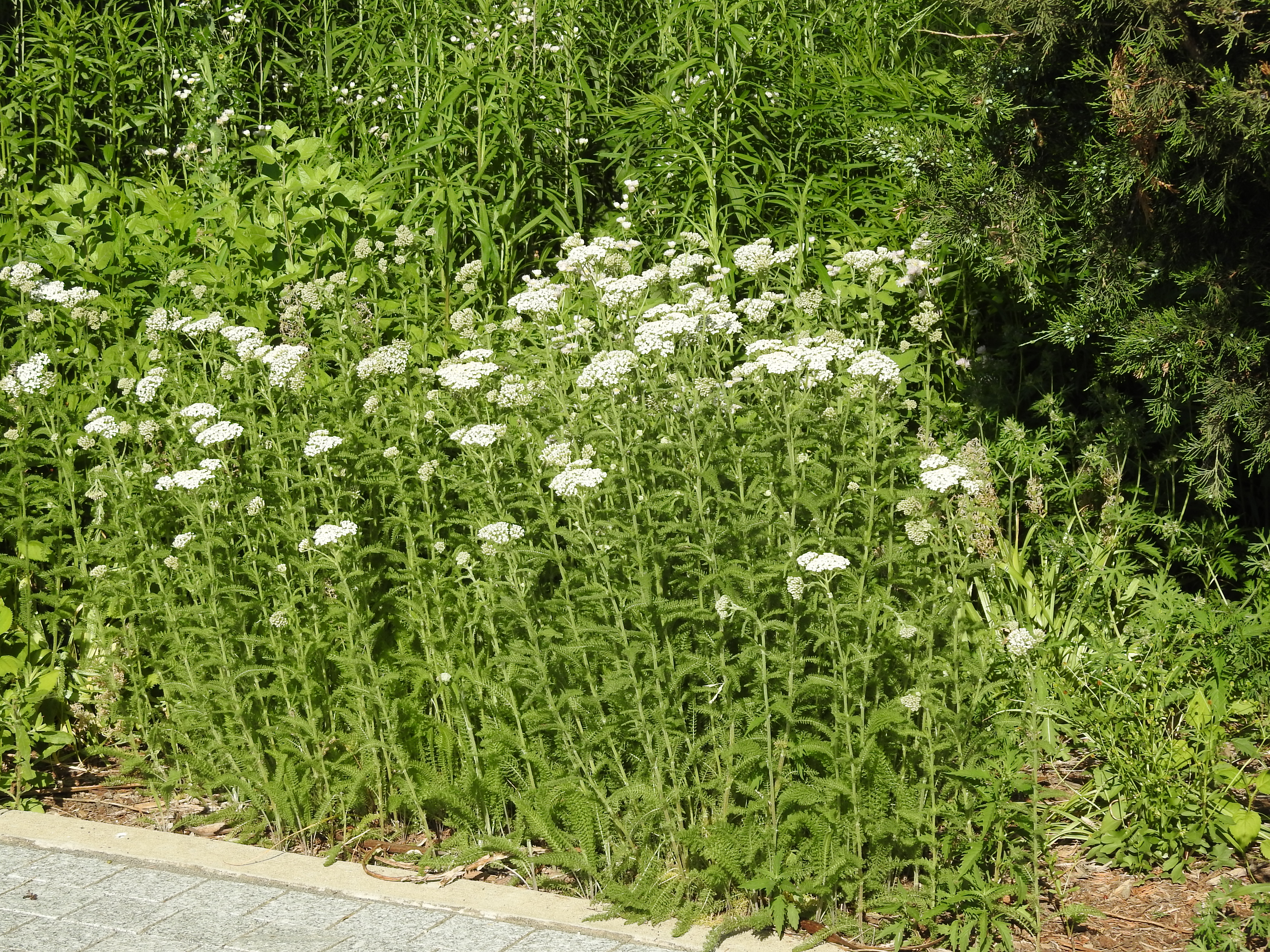
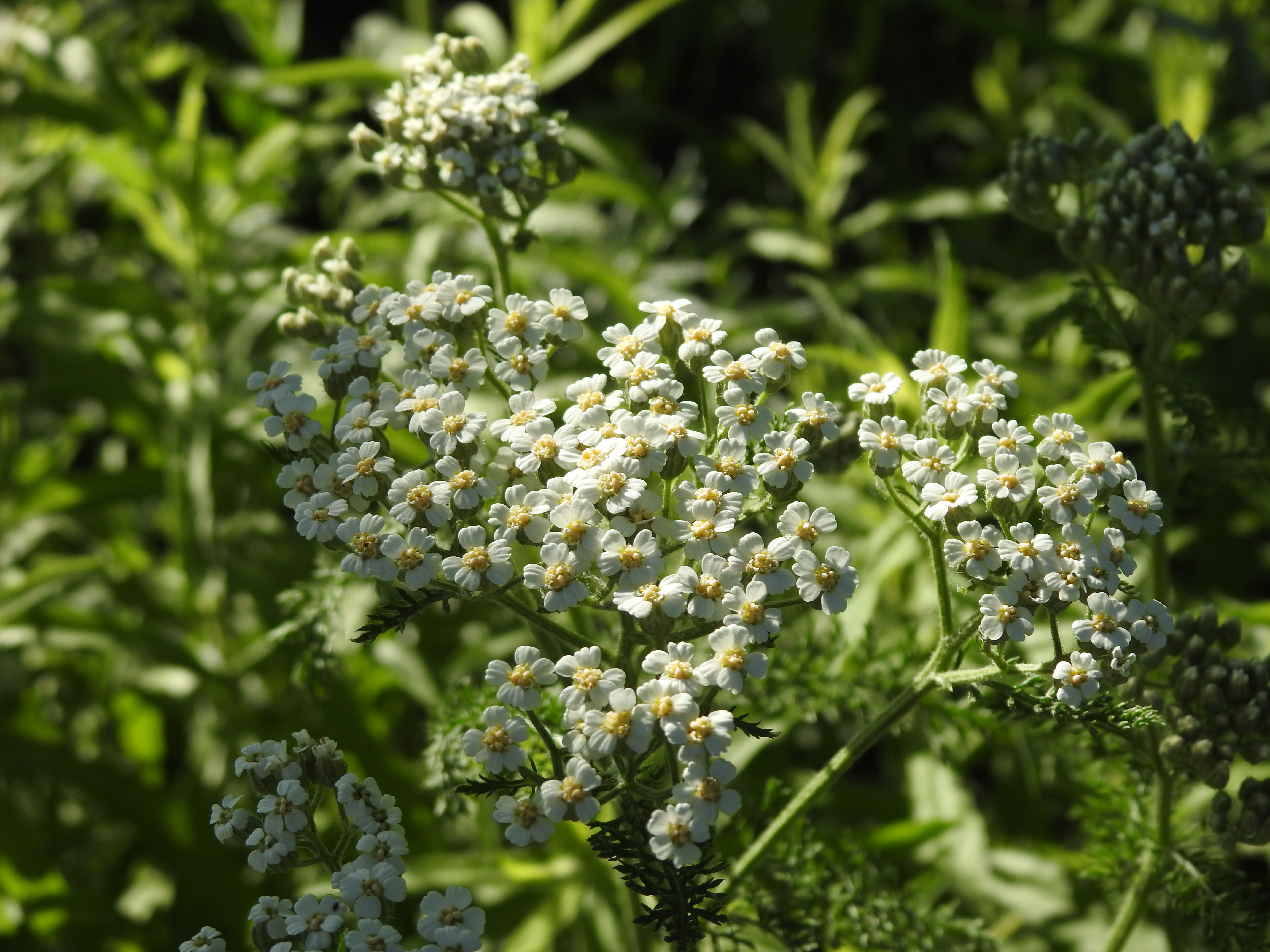
The tiny, delicate flowers of yarrow can only be appreciated by getting close. Both photos by B. Michel, NPS
Yarrow is not technically native, but it has been growing here since colonial times. Many different kinds of insects feed on it, which is unusual for a non-native species! Yarrow grows very well in a wide variety of environments, and it can get aggressive if allowed to grow unchecked. Our gardeners keep a close eye on it to make sure it doesn’t outcrowd other desirable plants in our gardens. It will be flowering into July, so you have plenty of time to come see it.
10. Daisy Fleabane, Erigeron strigosus. Currently blooming in beds North and South of the Grand Staircase.
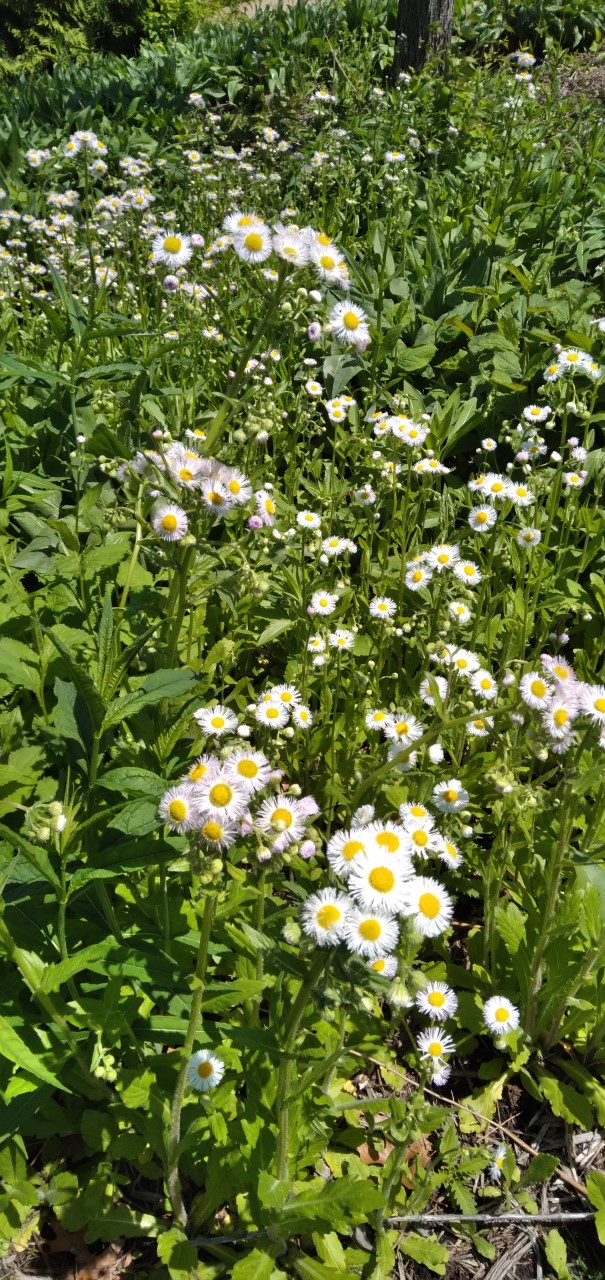
Photo: A. Prosser, NPS.It’s very likely that our garden’s visitors have seen this species before: it has been confirmed growing wild in 45 of the 50 United States. Where Daisy Fleabane is found, there tends to be a lot of it. The species self-seeds into loose colonies. Throughout its range, Erigeron strigosus is used by numerous bees and beetles. It is considered a pioneer species, which means it is one of the first wild natives to re-claim disturbed areas.
Bonus Bloomer:
Fringe Tree, Chionanthus virginicus.
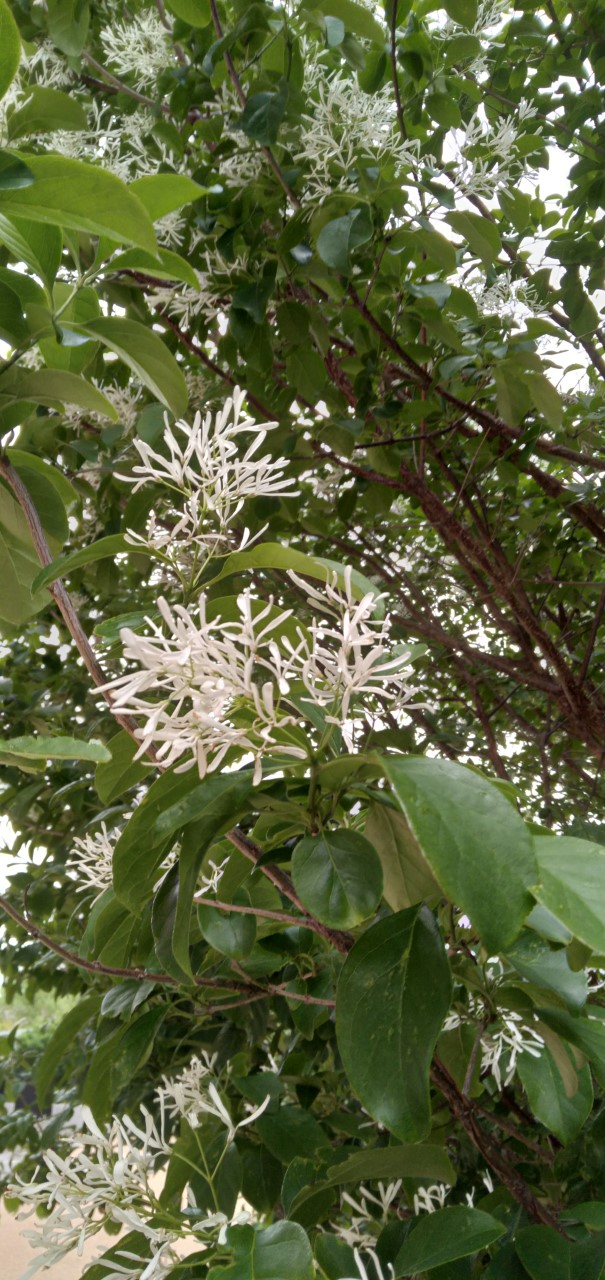
Photo: A. Prosser, NPS.
